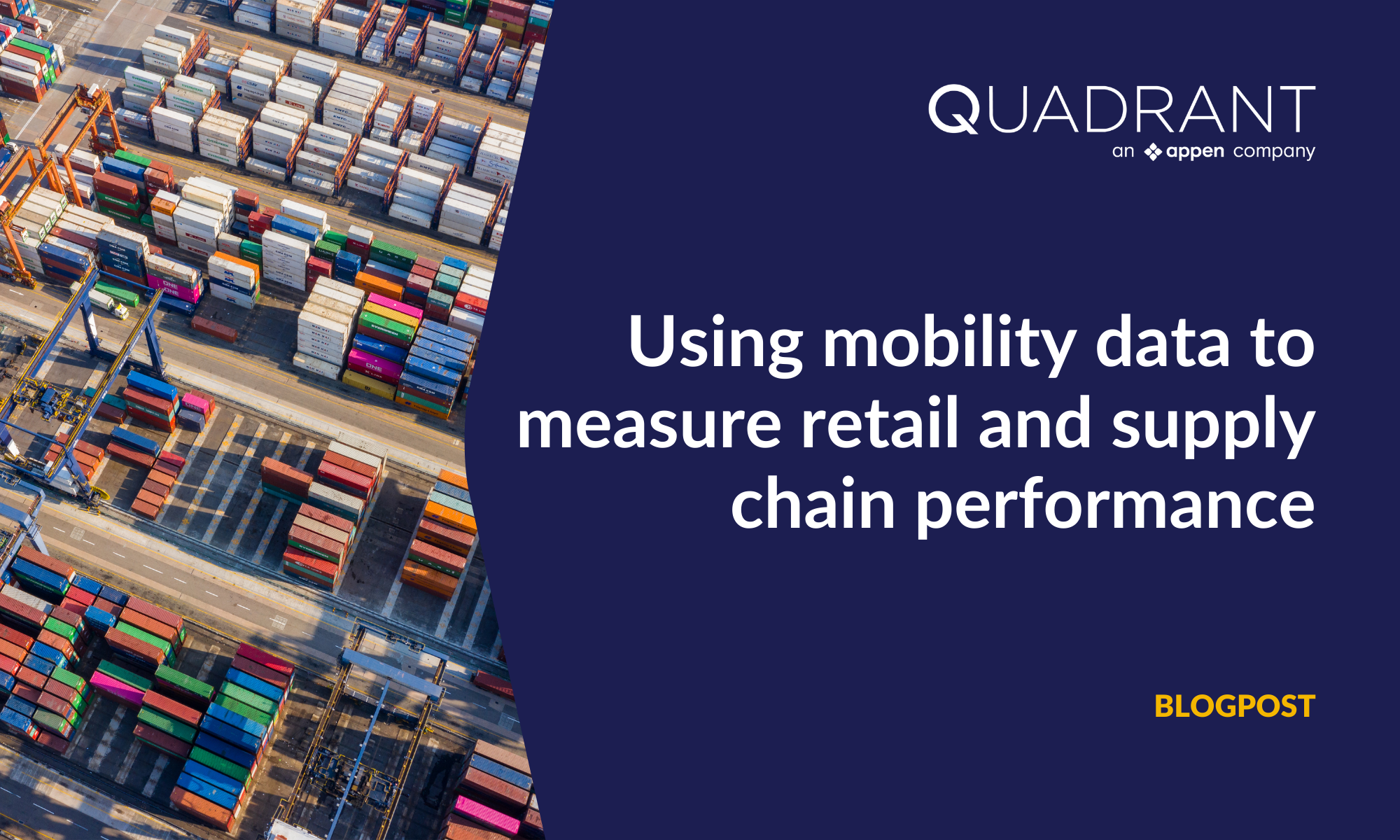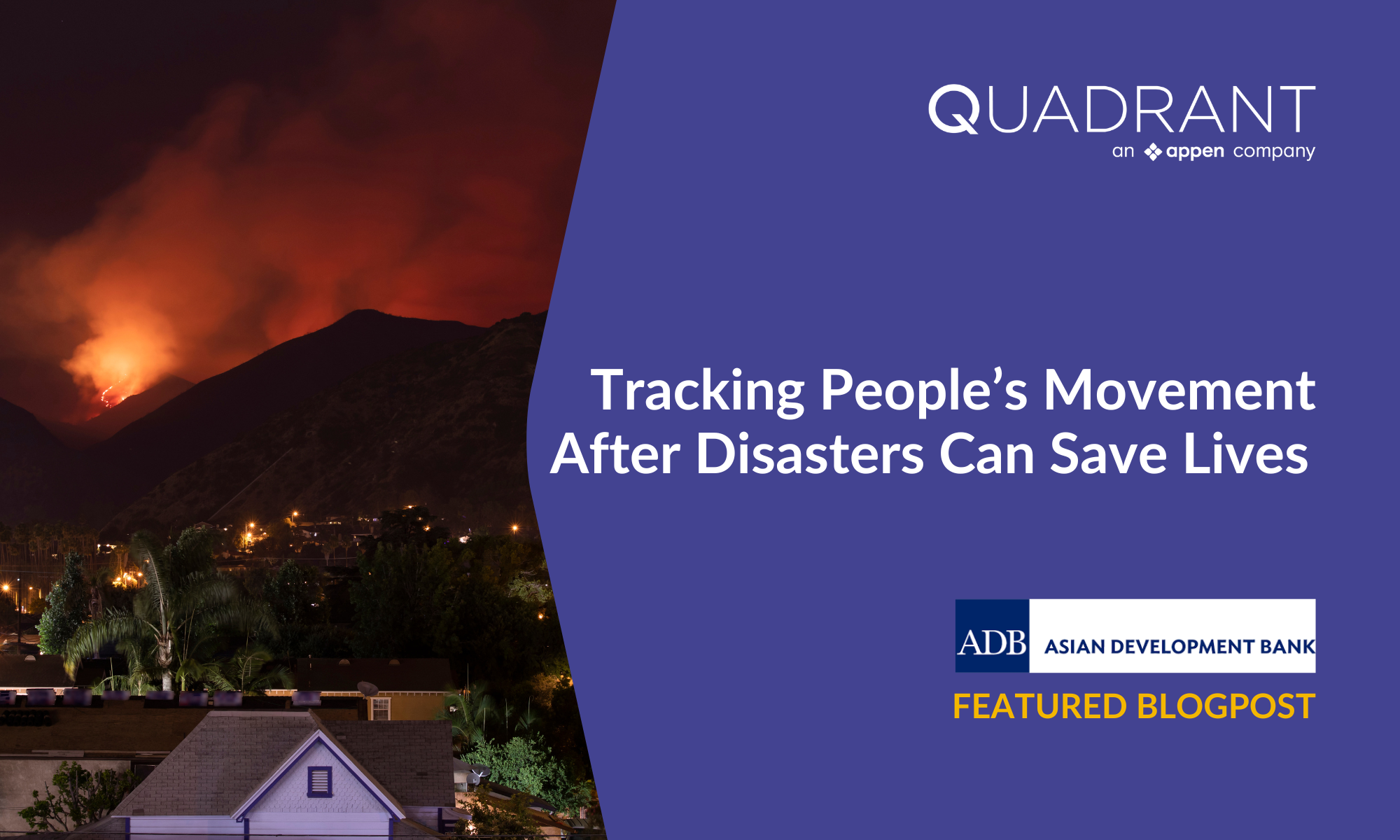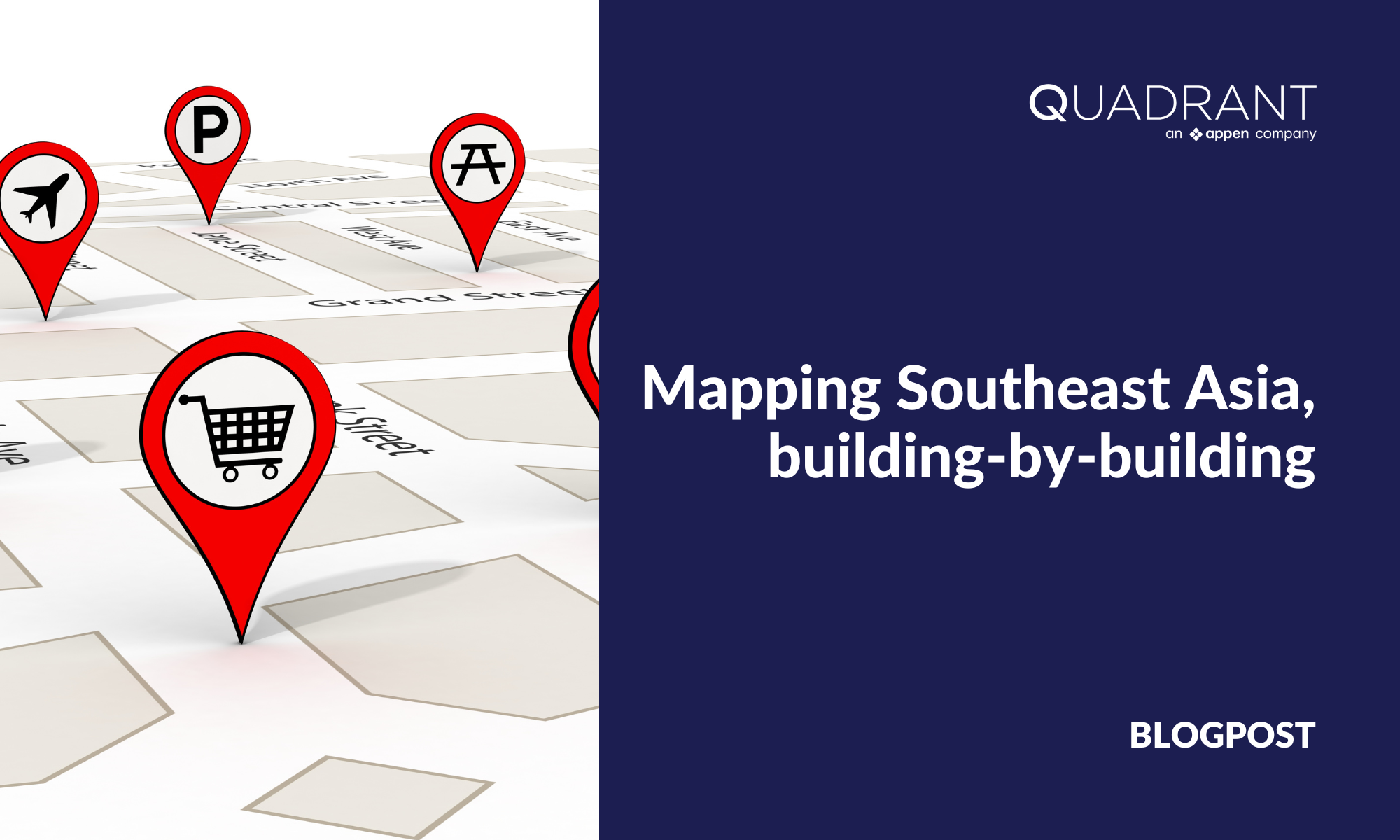Businesses that want to thrive must improve their performance across different functions to retain and increase market share. Nowadays, companies are tapping into a powerful form of business intelligence to achieve this goal: mobile location data. As a leading provider of geospatial information, Quadrant supplies data to customers that allows them to execute various analyses like measuring marketing ROI, site selection for expansion, benchmarking against competitors, and predicting performance. These analyses facilitate the optimisation of different operations which increases revenue and decreases costs.

PREDIK Data-Driven is a research consultancy that harnesses AI and Big Data analytics to develop market intelligence solutions. These solutions are used to generate comprehensive economic, financial, and commercial simulations for clients so that they can evaluate the impact of different variables on business performance. PREDIK Data-Driven has clients in numerous industries including banking, healthcare, real estate, and retail. While known as PREDIK Data-Driven in other regions, the company operates in Central America as ‘Central America Data’ and in Mexico as ‘Market Data Mexico’.
PREDIK Data-Driven utilises Quadrant’s mobile location datasets to execute competitive and supply chain analyses. These analyses enable PREDIK Data-Driven’s customers to increase revenue and reduce operational costs by enhancing supply chain efficiency.
Powering competitive analysis through location intelligence
PREDIK Data-Driven utilises mobile location data and geofencing to perform foot traffic analysis. In one of their projects, PREDIK Data-Driven compared the foot traffic at two popular fast-food restaurants in Monterrey Nuevo León, Mexico. The analysis revealed the distribution of visitors across both stores – thereby shedding light on which of the two franchises is more popular in the neighbourhood. It also looked at footfall patterns with respect to time to identify the busiest times of the week and individual days – insights that informed the allocation of employees based on workload. Additionally, the footfall data allowed PREDIK Data-Driven to calculate approximations for the revenue generated by both restaurants.
The figure below shows the footfall count at both restaurants across all days of the week.
Source: PREDIK Data-Driven Blog
Similarly, they also used footfall analysis to determine the volume of visits to two competing supermarkets in Guadalajara, Mexico. By investigating footfall traffic within and around the stores, PREDIK Data-Driven could visualise the distribution of customers within the supermarkets. This enabled them to provide the client with feedback on how to significantly improve their interior layout for adjusting aisle spacing, dedicating larger spaces to categories with high demand, leveraging unutilised space, changing the order of aisles, and improving product placement by positioning items that are frequently bought together close to each other
Implementing PREDIK Data-Driven’s suggestions enhanced operational efficiency, which resulted in better customer experience and a boost in sales. Additionally, evaluating mobility data for visitors beyond the confines of the store enabled PREDIK Data-Driven to develop detailed audience profiles for the client. The client used these profiles to launch more effective marketing campaigns to retain existing customers and attract prospects with similar interests. PREDIK Data-Driven also provided the same insights to its client as it did in the previous use case (information on store popularity, peak hours and so forth) which was used to optimise resource allocation.
Enhancing supply chain efficiency
Through the analysis of anonymised mobile location data, it is possible to identify and investigate the relationships that exist between distribution centres (i.e., warehouses) and points of sale (stores). PREDIK Data-Driven undertook such a project in Florida (USA) to analyse the interdependencies that exist between Walmart’s stores, distribution centres and other logistics facilities. The state was divided into five regions (central, northwest, northeast, southwest and southeast) to reflect the distribution of Walmart’s distribution centres.
The analysis revealed that one of the largest supermarket and drugstore chains in the US (Publix) relied heavily on distribution centres that serve Walmart from the central and north-eastern regions. Similarly, Sam’s Club was dependant on a south-eastern distribution centre that supplied Walmart. Finally, PREDIK Data-Driven also identified a lot of movement between a south-western distribution centre and ALDI Distribution Centre (a logistics complex).
The findings from the analysis proved crucial in improving supply chain operations, measuring losses due to damage to goods and churn, and making accurate predictions of sales during specific periods.
“Quadrant’s data, as well as its technical and administrative support have allowed us to build creative data solutions to many challenges and questions faced by our customers. The fact that it is a global solution opens the possibilities for us to cater to industries and projects around the world. The attention and the quality of the data is good, the technical support is there for us any time we need them to be. Quadrant has also shown a lot of pricing flexibility, to assist us in making our projects move forward. Being a research company, Quadrant’s data assets have proven incomparable for us.”
Andres Cobas – CEO and Director of Data Analytics and BI at PREDIK Data-Driven
Use case: Optimising logistics and warehouse performance using location data
Businesses in the logistics industry also utilise mobile location data to monitor and track the efficiency of the movement of goods between various buildings within their facilities. Our customers in this sector use mobility data to build models to track the logistical relationships between buildings within the same facility, and with buyers across the country they are located in.
By observing devices originating at the distribution centres over a period of time, data scientists can gather insights about how they move, the average distance travelled, and more patterns, especially within smaller geofences. Also, by estimating the relationship between different POIs, businesses can identify previously unknown client-supplier relationships and reveal actionable insights for nurturing partnerships that aid growth, operational efficiency and profitability.
For more information on PREDIK-Data Driven’s use of Quadrant’s mobile location datasets, download the case study.





